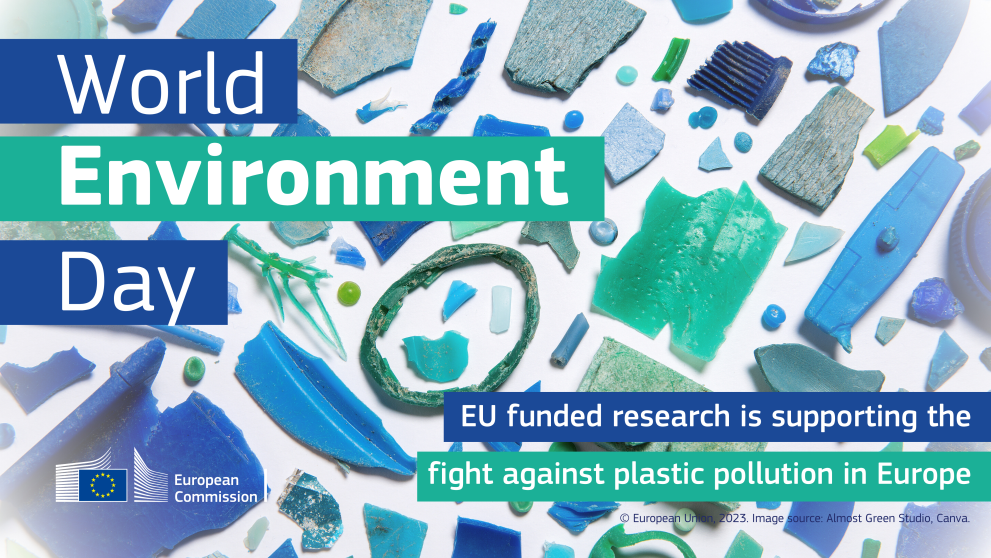
War on plastic
Smaller than a grain of sand, microplastics can be defined as plastics less than five millimetres in width and length. Herein lies the problem, their microscopic size has enabled them to permeate every step of the human food chain. This happens due to a process called micro plastic ingestion. This is when plastic waste breaks down into micro plastics by photolytic, mechanical and biological degradation. These smaller fractions of plastic particles subsequently become confused for plankton, ending up in fish, which then end up on our plates and in our blood stream.
In tandem, World Environment Day is the most significant day for global environmental outreach in the UN’s calendar, and this year takes direct aim at the increasing wider risk of plastic pollution globally under the campaign #BeatPlasticPollution. This looks at plastic pollution on a macro scale, from microplastics in water and soil, to plastics in landfill to how to improve the sustainability of a plastics life cycle.
The European Commission under the EU Green Deal policy objectives and Horizon Europe research and innovation funding programme is supporting projects that take an innovative approach at tackling the growing problem of plastic pollution in the same vein and mirror the UN’s efforts.
Below is just a glimpse of some of the dynamic projects funded by the EU and managed by the European Research Executive Agency (REA), and acts as a reminder that people’s actions, notably through citizen science programmes on plastic pollution can make a difference on the environment.
Empowering Citizen Science to Tackle Plastic Pollution
Getting citizens and the next generation to take an active role in fighting plastic waste is at the core ethos of the EU-funded Go Europe - Plastic Pirates project. The project aims is to teach school classes across Europe to collect data about plastic and micro-plastics in litter found in rivers and seas, and then transfer their findings to a database for scientists and researchers to study. This project is supporting the achievement of the objectives of Horizon Europe’s Mission to Restore our Ocean and Waters and contributes to other key European environmental policy objectives such as the EU Green Deal.
Find out more about Go Europe - Plastic Pirates
Market scale introduction of Reusable and refillable packaging (RRP)
Single use plastics are one of the biggest culprits of global plastics pollution. The EU-funded BUDDIE-PACK project looks at reducing the consumption of single use plastic in packaging and virgin plastics by championing the full-scale deployment of reusable plastic packaging in industry. The project works in tandem with the private sector to produce social, technological and economic innovations for RRP, with the aim of reducing single use packaging by 544 million units, save 18.5 billion litres of water and 37 kilotons of microplastics leaking into EU seas.
Find out more about BUDDIE-PACK
Sustainable packaging material in food retail
Plastic is the leading material used in food retail and as a result accounts for 36% of solid waste in EU towns. The EU-funded Reduce, Reuse, Rethink PACKaging (R3PACK) project, spearheaded by food retailers, will look at substituting complex multilayer plastic packaging in 13 different food products with high performing fiber-based packaging to meet industrial needs. The project will also look at Reuse and Recycle schemes to promote more sustainable packaging to European consumers.
Find out more about R3PACK
New methodology to tackle eco-threat of microplastics and nanoplastics
It is a fact that microplastics and nanoplastics are traceable in everything from water to soil, however studying these plastics can be difficult due to their miniature size in nature. The EU-funded AQUPLAST project seeks to develop a new method of monitoring microplastic and nanoplastic distribution in environmental compartments and improve risk assessment in environmental and human health. Based on new methodologies using imagery, they will lead to a stronger understanding of the risks of MPs and NPs pollution for environmental and human health, providing data that could be used by policymakers.
Find out more about AQUPLAST
Inexpensive bio-based microplastics removal strategies
The EU funded project REMIPLASWAS seeks to sustainably remove microplastics from wastewater without using harmful chemicals for the environment. Current methods have proved to be limited in this sense. REMIPLASWAS uses microorganisms to transform organic matter, allowing the successful extraction of microplastic pollutants.
Find out more about REMIPLASWAS
Recycling contaminated plastic from industrial waste
Some plastics are easier to recycle than others depending on the hazardous substances in them, meaning they could end up landfills posing a direct threat to European citizens. The EU-funded NONTOX project is developing a novel recycling process that will increase the recycling rates of contaminated plastics from industrial waste. The focus is on plastics from waste electrical and electronic equipment (WEEE), end-of-life vehicles (ELVs), and construction and demolition waste (CDW) that contain dangerous compounds such as flame retardants, stabilisers and fillers.
Find out more about NONTOX
More information
Details
- Publication date
- 2 June 2023
- Author
- European Research Executive Agency
